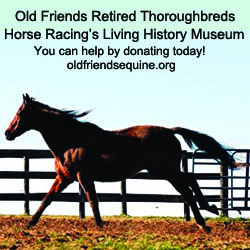Retire & Rehome
Whichever way we ride or however we are associated with horses, we can all agree that horse welfare and rescue is extremely important. Learn about these caring places in our Rehome section, where money and time can be donated to help horses find, or remain, in their forever home.
Many charity events help fund the good work of equine rescue organizations. Parties and auctions to benefit rescue are included in the Calendar of Events for Retire & Rehome.
Have an old friend to retire? Find a place where your horse can live the life of leisure in our Retirement section.
Do we need to add an event or rescue? Please use the useful feedback link and let us know!
Nancy Bidlack, Carol Burnell, Judy Kirby, Cathie Morton and Roxie Nieroda have never met but they share a commitment to ensuring that America's horses live in comfort, and with purpose and dignity. They are also the five volunteers that are receiving new boots thanks to Ariat International, the sponsor of the EQUUS Foundation Champions program.

Roxie Nieroda, a 63 year old grandmother, retired two years ago from a lifelong career as a CPA and financial consultant. "I have always loved horses and always dreamed of owning a horse one day," said Roxie.
When she retired, a friend told her about the Missouri Forget Me Not Horse Rescue and Sanctuary, a charity committed to providing aid and sanctuary to abused, neglected, abandoned or donated horses in peril and to providing a network of support and basic equine educational resources to help prevent any further abuse and neglect.
So, Roxie volunteered to feed the horses and muck the stalls. Roxie also offered her professional skills to keep the books, and it wasn't long before she joined the Board and assumed the position of Treasurer. "I love being able to help save these beautiful animals from neglect and abuse," said Roxie.
Then Buddy found Roxie one day. "He made me adopt him", said Roxie. "I am glad that I am able to help this wonderful organization, and am so grateful that my dream came true."
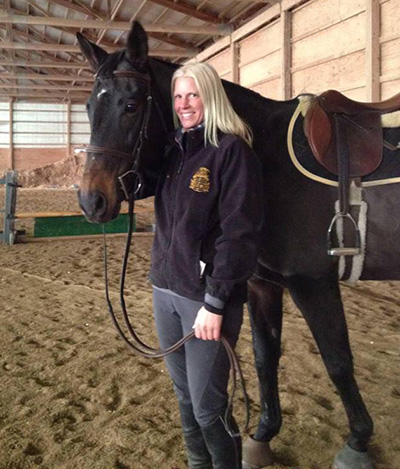
Nonprofit receives national recognition for finding retired horses at Arlington Park homes
Karen Ann Cullotta, Contact Reporter - Chicago Tribune
Horse trainer Jan Ely remembers the day she received a frantic phone call from an animal rescue volunteer who had identified one of the horses in a "kill pen" in Shipshewana, Ind., as Pushin Up Daisy — a thoroughbred mare who had been racing at Arlington Park just a few months earlier.
"She had left Arlington around the end of July of 2015 and just four months later, she had her foot on the banana," said Ely, the coordinator of Galloping Out.
The nonprofit organization in Illinois has found homes for more than 180 retired thoroughbred horses who have raced at Arlington Park in Arlington Heights and Hawthorne Race Course near south suburban Cicero.
Read the story in the Chicago Tribune
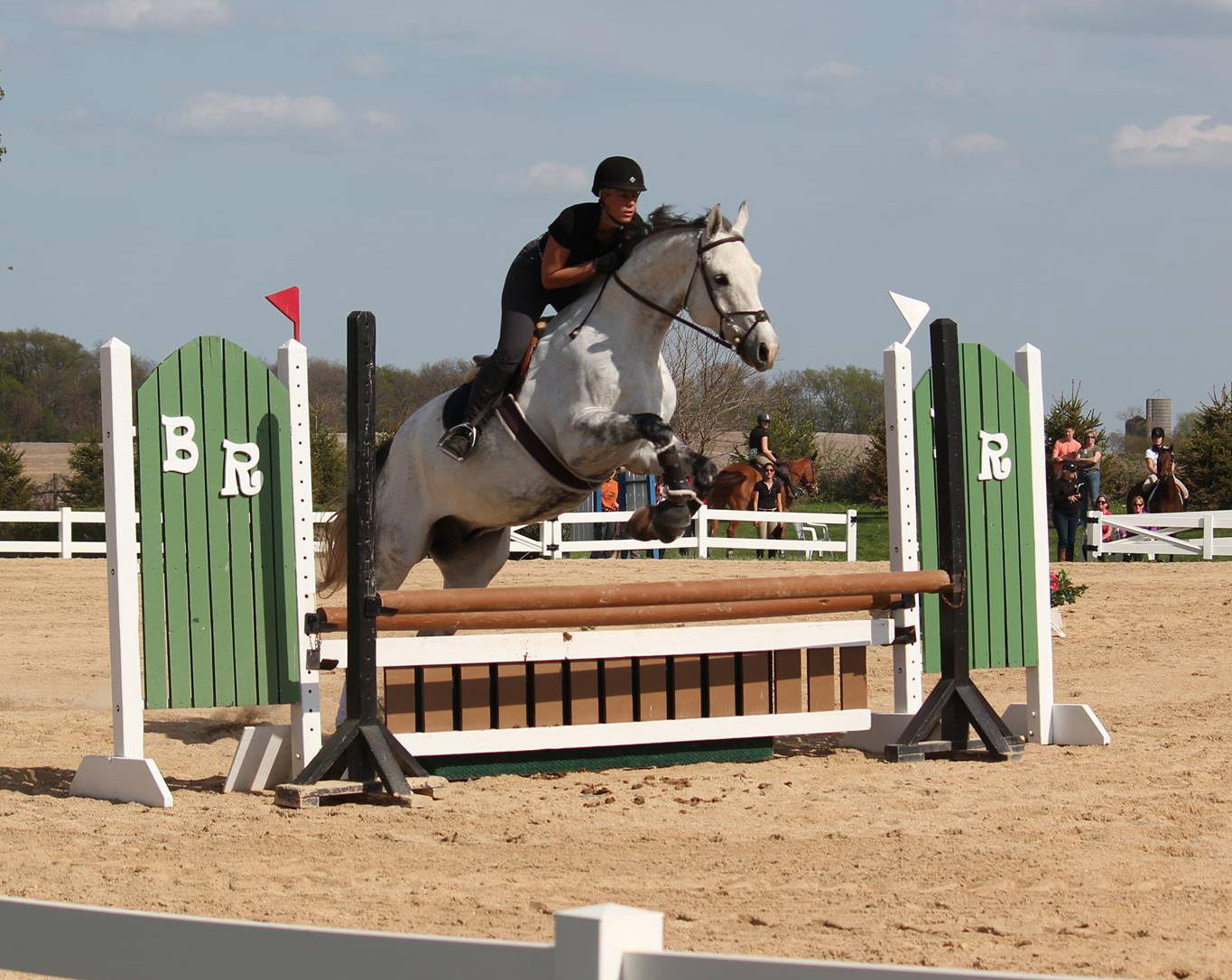
Read more: Nonprofit Receives National Recognition for Finding Retired Horses Homes
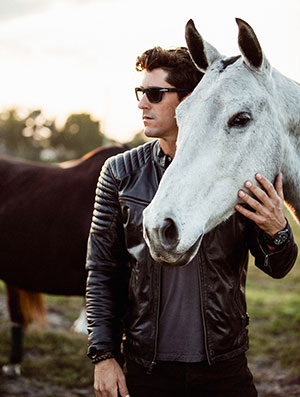
Fuelled by talent, charisma and passion Nic Roldan is currently the leading American polo player with an impressive 8-goal handicap rating. He is also the youngest polo player in the world to win the prestigious U.S. Open Polo title at the young age of 15 and is currently Captain of the U.S. Polo Team.
Winning in tournaments on all 5 continents at every goal level, Nic continues to gain worldwide acclaim. He intends to increase awareness and participation for the sport at all levels, attain the highest accolade 10-goal status, play the Argentine Open, claim a second U.S. Open Polo title, add more worldwide Polo trophies to his cabinet and help America reclaim the illustrious Westchester Cup.
Nic is the captain of the U.S. Polo Team which has benefitted by his leadership and skills with success in International tournaments. The team continues an increasing participation in Beach Polo, Snow Polo and Charity events. His philanthropic involvement as team captain in charity tournaments is widely recognized, as is his distinct modelling career.
He is committed to popularize the sport he loves as an ambassador to a wider audience of younger players and new spectators which reflects his passionate dedication to Polo.
EIE: Nic, you are an international polo star from the result of your hard work. Tell our readers about how you got started in polo?
NR: I’m a fourth generation polo player and was born in Buenos Aires. My father was a professional polo player, I was riding by 3 and playing at 5 as is normal in polo families and having been bought up on a polo farm in Wellington, Florida.
EIE: What separates you from other players and elevates you to the top of your game? It is your work ethic, your skills, your ponies or something else?
NR: I think a little bit of everything, like any top athlete everyone has a good work ethic, I’m focused, have a good work ethic and a deep hunger to win which has always helped me. I believe in myself. Of course ponies count for 80% of the game when it comes to polo and all the top players are extremely well mounted. Other than that practice, practice, practice and hard work, I think people underestimate that at times.
EIE: Tell us about your ponies! Here we see a wonderful page which pays tribute to some of your amazing ponies. Can you let us know some of the ways you find your horses?
NR: Argentina has the monopoly on all things polo. There, players breed copious numbers of ponies and nowadays frequently using embryo transfer. Obviously they have the pampas and space is not an issue so the number of horses people own is not constrained, which means they can try lots of breeding combinations very quickly which by regular breeding would take over a decade to achieve.
Read more: From Racetrack to Polo Field, Nic Roldan on Retraining the OTTB
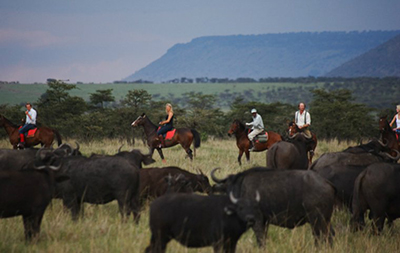
by Joel Turner, originally published in Thoroughbred Racing Commentary.
" I believe we all brought home from our African horseback safari a new appreciation for the courage, intelligence, stamina, and adaptability of the Thoroughbred horse and the suitability of retired racehorses for even this very unusual second career."
Bay, chestnut, and gray, all 14 of them stood in a straight line, ears forward, alert and ready to run. Some stood still, poised. Others fidgeted in place, shifting their weight impatiently and ready to bolt, all listening to the sounds in the early dawn. These horses were not staring down the stretch from the starting gate during a schooling session at the racetrack. They were listening to two lionesses and their pride circle and drag down a wildebeest about 100 yards from Gordie and Felicia Church’s Safaris Unlimited Masai Mara camp in the savannah near Narok in west central Kenya. Not far from the Tanzania border and the famous Serengeti Plain, these horses, many of them retired racehorses, were to be our mounts for our upcoming nine-day horseback safari. They stood tied to a picket line trusting the Masai guards, who had only bonfires, spears, and solar powered floodlights to protect all of us — horses and humans alike — from the predators circling our Olare Lamun encampment.
The preceding afternoon, a group of eight of us from Prospect, Kentucky had flown in from Nairobi, jetlagged and a little jarred and jostled by the chartered bush plane’s rough landing on the dirt runway at the Oleseki airstrip just inside the Naboisho Conservancy. Everyone in the group had owned and had ridden retired racehorses at one time or another, and we shared an appreciation for their ability to be retrained for second careers. Among us were event riders, foxhunters, former trainers and exercise riders, a saddle horse competitor, and a newly converted dressage rider. None of us were aware of just what these 14 horses would be asked to do in the next nine days. We would soon find out.
After “tea” in the English tradition on the afternoon of our arrival, we were assigned horses that would take us about 125 miles northwest, through the Ol Kinyei Conservancy and across the Mara North Conservancy to our final camp on the banks of the Mara River. Our first evening’s ride was, ostensibly, to be an opportunity to acquaint ourselves with the horses and for Gordie and Felicia to assess our strengths and weaknesses as riders.
We had all filled out detailed questionnaires about our riding experience, fitness levels, weight, and height. Gordie and Felicia provided us with a little background information about our mounts while still in the “Bush Bar,” a comfortable tent adjacent to the main dining tent. It was surprising to hear from Gordie and Felicia that among the horses we were to ride were 10 former race horses aged six to 20, including a couple of stakes-performing/stakes-producing broodmares, several former polo ponies, and a former event horse.
Read more: From Post to Picket Line: Retired African Racehorses on Safari
Holiday video raises awareness of horse rescue challenges.
Shoreview, Minn. [December 21, 2016] – Deeply caring for animals does not have a season for anyone who raises them – whether they do so for fun or a career. But, during this holiday season, Purina Animal Nutrition encourages all to think about the wishes of animals – and the expressed and unexpressed needs they have.
The emotional connection between animals and people inspire us, drive us, challenge us and reward us. In return, the inner passion, love, a sense of accomplishment and sense of purpose our animals bring can be the greatest reward of all.
Our team at Purina Animal Nutrition believes in the greatness in every animal. But before animals can reach their full potential, they need a good home which provides the right nutrition.
Unfortunately – as an example – thousands of horses across the United States are in need of new homes. This holiday season we ask you to help us raise awareness by sharing the story of Sam, a horse whose only wish is to find his person for Christmas. Thankfully, Sam’s wish comes true.
Together we can help the wish come true for horses across the U.S. and all other animals deserving the human nurturing they need to live their greatness. At the same time, millions of farmers, families and children are caring for these special animals. It is our challenge to recognize, support and encourage this bond and commitment.
To support horse rescues or to find a horse available for adoption, visit our partner, A Home for Every Horse, at ahomeforeveryhorse.com or go here.
Read more: Christmas: A Time to Remember the Year ’Round Wishes of Animals
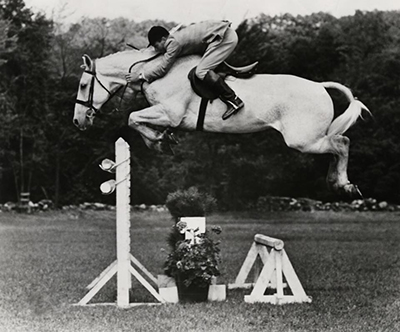
by Patricia N. Saffran
To find out how the German army treated horses in Holland during WWII, I contacted renown Dutch horseman Harry de Leyer who lived through the German occupation on his family’s farm in Sint-Oedenrode. He spoke to me at length over the phone and then said, “Come visit.” Mr. de Leyer is the subject of several books and a recent film for having bought an Amish farm horse off a truck bound for slaughter. He named him Snowman. The pair went on to show jumping fame by beating far more expensive horses and winning many major competitions.
We arrived in Virginia and drove up to Mr. de Leyer’s farm. Two Jack Russell terriers and a small Saint Bernard gave us a rousing welcome. The farm manager greeted us and said, “It’s not necessary to have barn cats with a fast Jack Russell around. One of them chases after mice.” He showed us his three resident retired prize winning Thoroughbreds in stalls and explained the empty stalls, “Harry’s health isn’t terrific and he spends much of his time in the house now. Besides my horses here, Harry has his own retired Thoroughbred who is shy and likes to be in his own pasture.” We were led to the farmhouse and introduced to Mr. de Leyer, who was sitting in his living room surrounded by a huge number of trophies, ribbons, memorabilia, and photos all over the walls of his many triumphs with Snowman and other jumpers. The latest trophy, Mr. de Leyer told us, was from the documentary about him, Harry and Snowman, by director/producer Ron Davis, which had won a prize at the Equus Film Festival in NYC last November.
Read more: Harry & Snowman, Harry de Leyer’s View of Horses During WWII
Desi's Forever Home (Bring your tissues!)
- Adopted horses: A Second Chapter
- Galloping to Freedom: Saving the Adobe Town Appaloosas
- MONEIGH Fundraiser to Help Horses!
- Film Producer and Director Victoria Racimo: Finding a Passion and Making the World a Better Place
- ONE DAY - OUR MIMS Documentary Teaser - Video (1:21)
- ReRun - Rehabilitating, Retraining & Rehoming OTTBs
- Painting Horse Raises Thousands for Charity
- Florida TRAC horse rescue - Video







